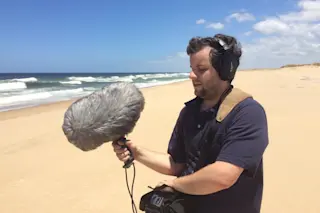In April, Juan Pablo Culasso, a nature sound recordist and birder, released the first sonar map of the ecosystems of Uruguay. The map consists of a series of natural soundscapes recorded in some of the most iconic locations of the country. Culasso's goal was to show the world — through sound — a sample of the natural environments in South America that are disappearing at an alarming rate.
Culasso, 35, who was born without sight, says he chose the locations based on his memories from childhood. He wanted to revisit the places he traveled as a kid with his family. “For two months I traveled through my country, and in most places, there has been tremendous loss,” says Culasso. “It is very different to return as an adult, you have an idealized it in your memories, and a lot has changed. Nevertheless, I was very happy to be able to ...














